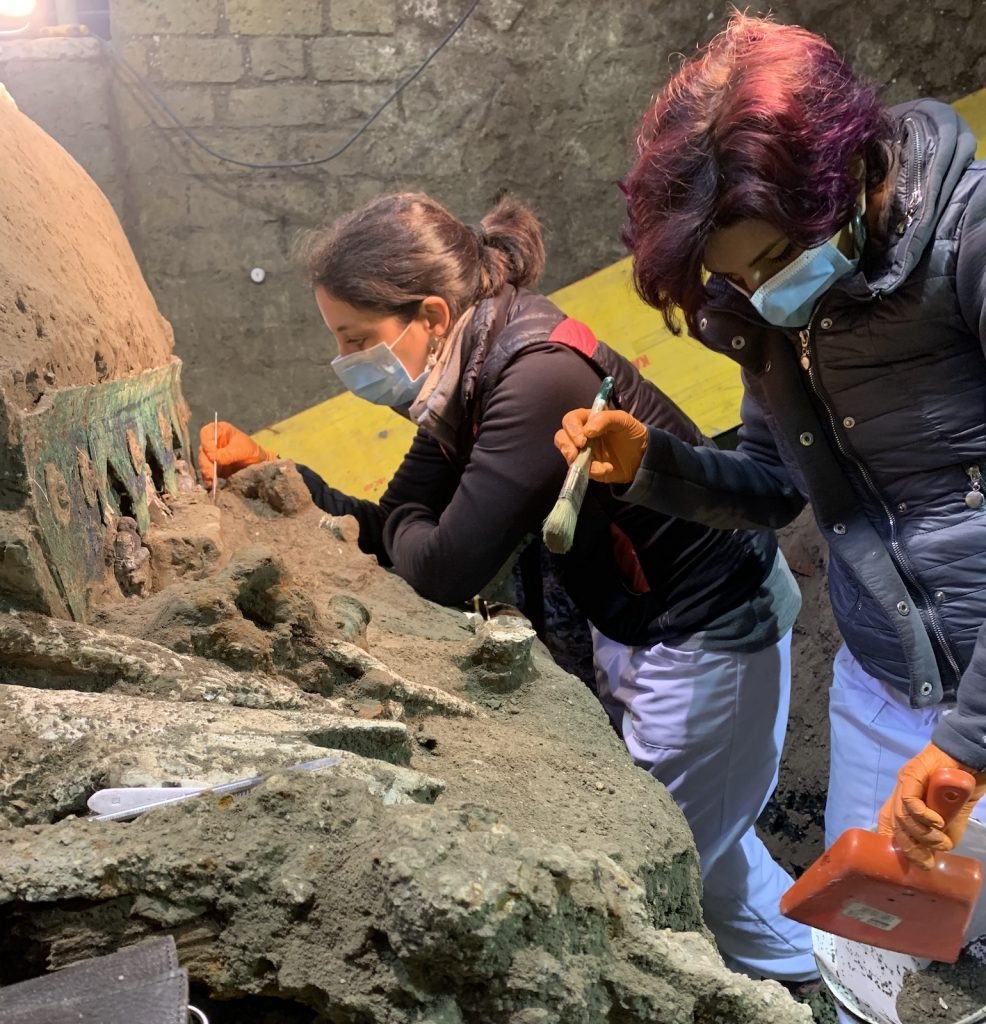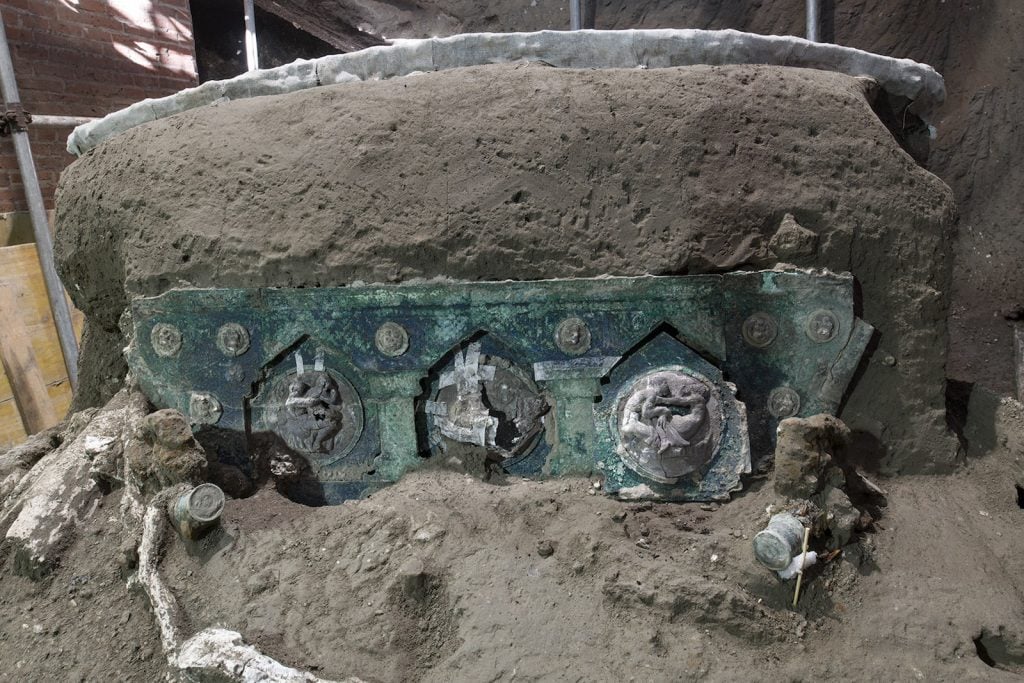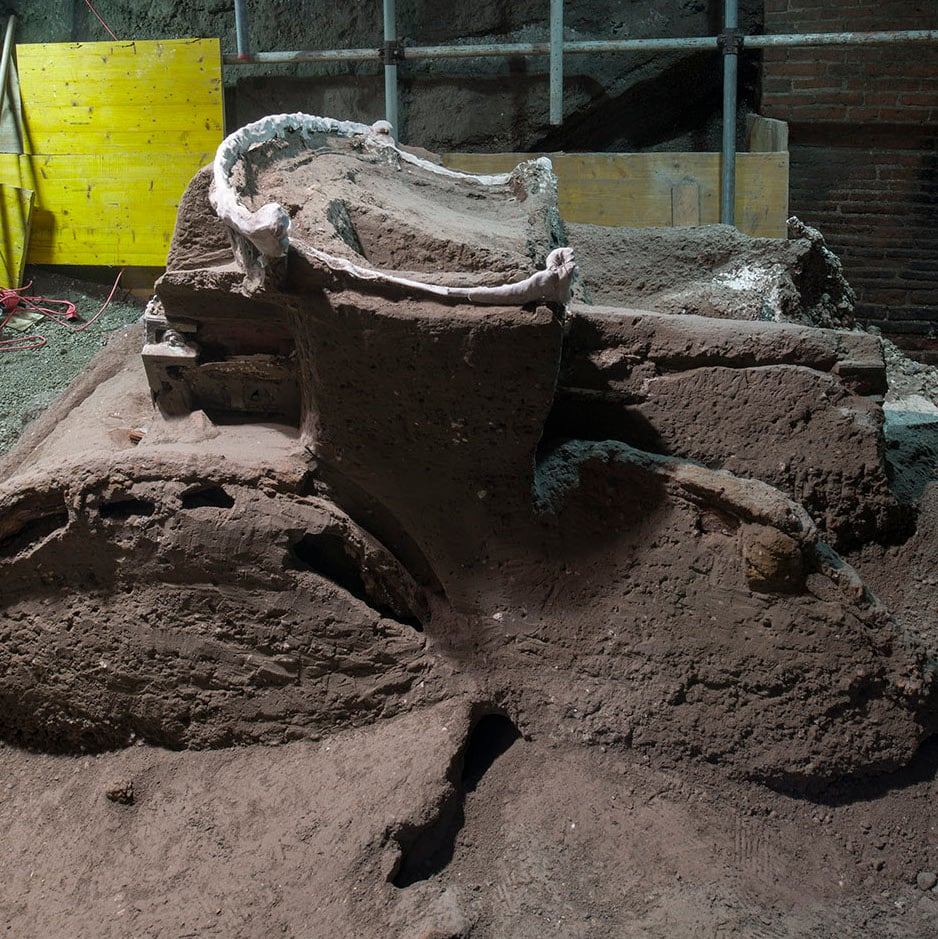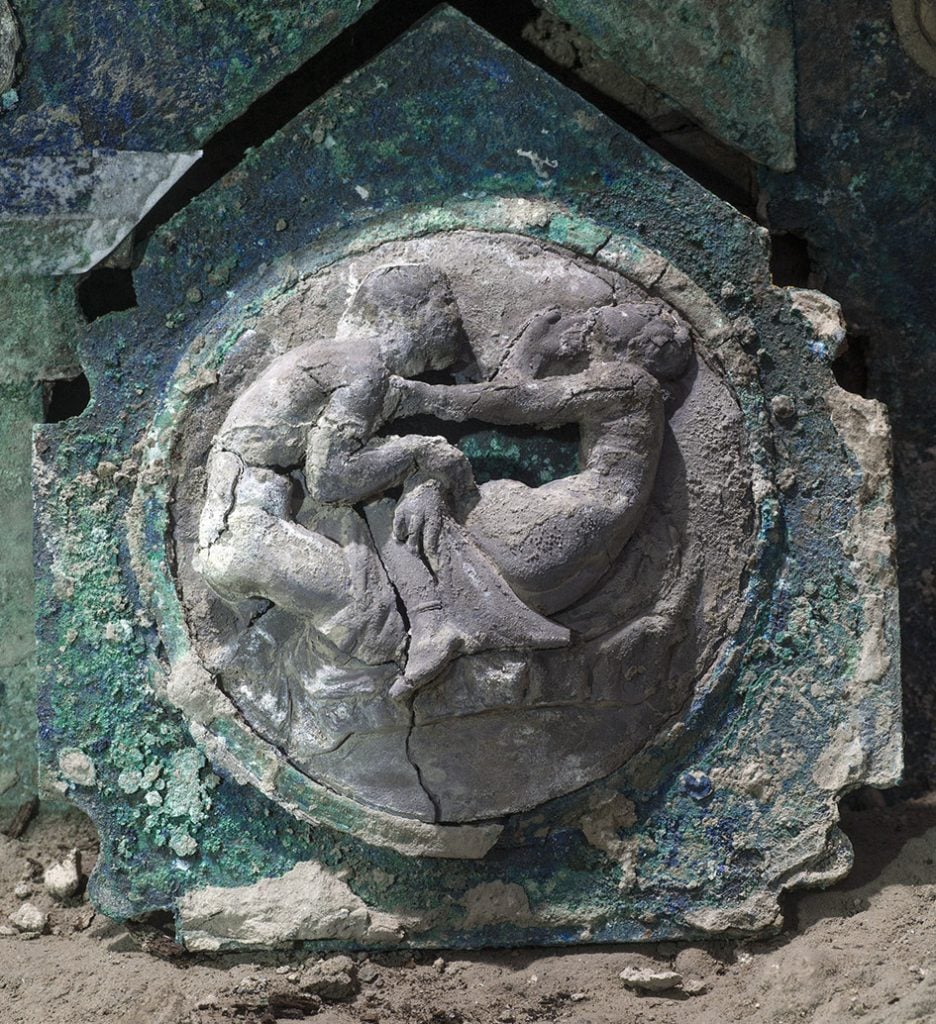Archaeology & History
Pompeii Archaeologists Have Unearthed the ‘Lamborghini’ of Chariots, Used to Chauffeur the Elite During Ancient Festivals
Erotic scenes of satyrs and nymphs adorn the chariot.

Erotic scenes of satyrs and nymphs adorn the chariot.

Brian Boucher

An excavation just north of Pompeii has unearthed a large and almost entirely intact ceremonial chariot. The find is unique in the history of archaeological digs in Italy, say experts with the Archaeological Park of Pompeii, who made the discovery at the suburban villa of Civita Giuliana, near Mount Vesuvius.
“I was astounded,” Eric Poehler, a professor at the University of Massachusetts Amherst who studies traffic in ancient Pompeii, told NPR. “Many of the vehicles I’d written about before… are your standard station wagon or vehicle for taking the kids to soccer. This is a Lamborghini. This is an outright fancy, fancy car.”
The chariot is in such a fine state of preservation that it contains not only the high iron wheels, metal arms and backrests, bronze and tin decorations, and mineralized wood remains, but even evidence of rope and the flowers that decorated it. It is adorned with medallions picturing satyrs and nymphs in “erotic scenes.”

Photo by Luigi Spina, courtesy of Archaeological Park of Pompeii.
The chariot was used in festivities, parades, and processions, say the Archaeological Park researchers. It may have been used in marriage ceremonies among social elites, such as to lead the bride to her new household, according to ancient literature.
The dig was initiated in cooperation with the prosecutor’s office of Torre Annunziata in order to discourage the looting that had been active in the area. It’s a miraculous find, the office says, because a set of complex tunnels that reached depths of five meters, dug by looters, literally touched the chariot. Two defendants accused of ringleading the theft are now on trial; the tunnels were found to begin at their homes.

Photo by Luigi Spina, courtesy of Archaeological Park of Pompeii.
Minister of culture Dario Franceschini hailed the find as “a discovery of great scientific value.”
The multidisciplinary team of experts comprises not only archaeologists, architects, engineers, and vulcanologists, but even archaeobotanists (who determined the kinds of wood used in the chariot) and anthropologists.
“It is an extraordinary discovery for our knowledge of the ancient world,” says Massimo Osana, director of the Archaeological Park, in a statement.

Photo by Luigi Spina, courtesy of Archaeological Park of Pompeii.
The same dig, commenced in 2017, uncovered evidence last year of two bodies, perhaps a master and a slave, killed by the volcanic eruption. The body of another person, apparently killed by a rock flying through the air from the eruption, was found the following year.